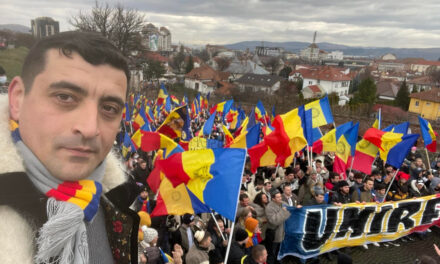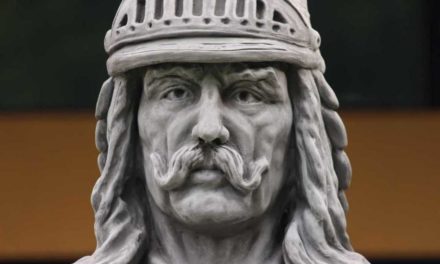In the Házsongárd cemetery in Cluj-Napoca, the Romanian tricolor was placed on the graves of nearly five hundred Hungarian soldiers of the First and Second World War, who died fighting against the Romanians. "Commemorative grave robbery" violates the contract on several points, and is not a unique case.
By the middle of August, the whole of Cluj was dressed in blue-yellow-red colors, in addition to the indispensable EU flags, immaculate clean Romanian flags were placed on every existing lamp post and lamp, but even the antennas of the Dacians were studded with ribbons. Everything from the Mátyás Hunyadi statue in the main square to the ruler's birthplace on the two corners took on a Romanian national color, writes the HVG.
"Mátyás Corvin of Romania, the greatest king of Hungary"
- announces the heavy metal sign in Romanian and English affixed to the building. Templomok Street, which has become a symbol of tolerance and religious freedom in Transylvania, also shines in tricolor colors.
It was also revealed that a newly built Romanian World War II monument with the following inscription, which cannot be read in Hungarian, is hidden in the ring of Hungarian war graves with the Romanian tricolor:
Glory to the Romanian soldiers who sacrificed themselves for the liberation of the homeland and the people from the fascist yoke!"
The locals are already used to it, this is a late summer phenomenon in Cluj. This is when the Hungarian Days of Cluj, the city's most important event, are held. The cultural event attracts visitors from Hungary and around the world, and it also coincides with the founding of the state on the 20th of August, which is celebrated by the Hungarian residents of the settlements throughout Transylvania. Where there is a Hungarian majority in the municipality, there are also fireworks. "At this time, freshly ironed Romanian flags appear every year," says a Hungarian university student from Cluj-Napoca.
The Házsongárd cemetery begins not far away, probably one of the most beautiful cemeteries in Europe. The public cemetery in the traditional sense, created during the plague epidemics, provided a final resting place for everyone regardless of ethnicity and religion for centuries, Hungarians, Jews, Romanians and Germans from the area also buried their ancestors here. The graves of most of the local literary, scientific and political elite are also located here, starting with János Apáczai Csere and Jenő Dsida, through Sándor Reményik to Károly Kós.
Although the cemetery was officially classified as full at the end of the 19th century, in the first half of the century there was a sudden increase in the demand for graves, the soldiers of the First and Second World Wars were forced to occupy the southeastern end of the cemetery. However, a blue-yellow-red Romanian national ribbon was recently placed on the graves of the fallen soldiers of the two world wars. However, there is no doubt that all of them were Hungarian soldiers and most likely of Hungarian nationality. At least the 446 soldiers who can be identified by name in the war grave register database of the Military History Institute and Museum.
In the online database, the place of birth is listed for most of the deceased, which shows that they came from Hungarian-inhabited Transylvanian settlements, and even quite a few of them came from the territory of today's Hungary. In addition
all of the war graves have Hungarian names on them, all of them fought in the Hungarian Armed Forces in both world wars - so the Romanian tricolor placed on their graves is even more difficult to interpret.
Cover image: Unlimited for Hungarian Youth Facebook













